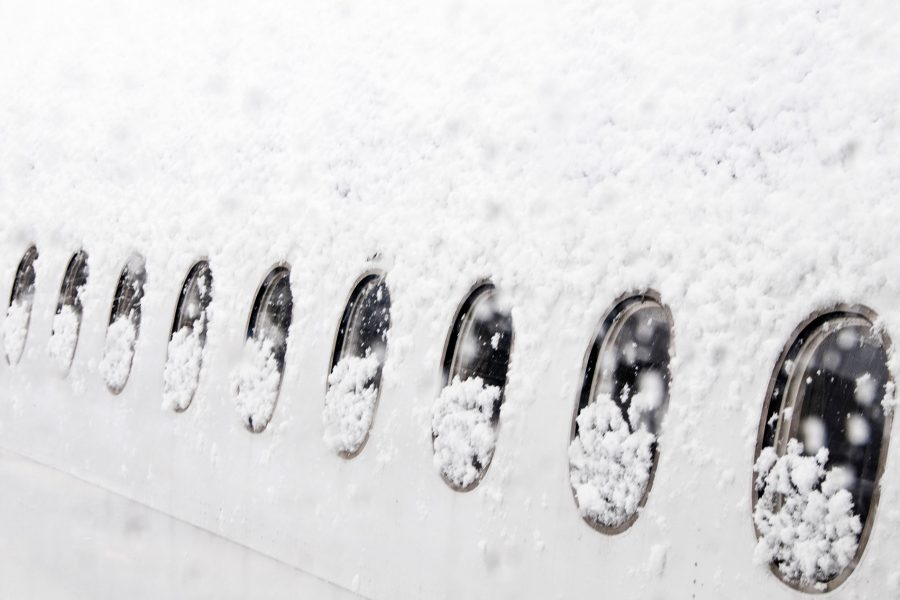Why ice plays havoc with aircraft operations

Darwin International Airport in Australia’s Northern Territory does not have de-icing equipment. Hardly surprising given temperatures rarely drop below 25°C in the depths of ‘winter’. Yet a couple of years ago, Cathay Pacific had to ground a flight because there was no way to remove ice from the wings.
Ice is not good for aerodynamics. ‘Even a millimetre of ice can disturb the air flow over the wing, which can prevent it having enough lift to fly,’ says Line Operations Manager Captain James Toye.
Snow is an obvious disrupter: clearing snow causes delays or cancellations and greatly impacts take-offs and landings. But the big issue is the wintry blend of plummeting temperatures and precipitation. ‘That’s anything from freezing fog, ice crystals, snow and even freezing rain,’ says Toye.
First a plane must be de-iced, to clear existing ice or snow, with a hot mix sprayed from truck-mounted gantries. Then the aircraft needs to be ‘anti-iced’. You may have been in a plane that has been sprayed with a green gunk? That’s anti-ice fluid, and once it’s applied it’s a race to get airborne as soon as possible.
Toye says: ‘Anti-ice absorbs the moisture and comes off when the aircraft accelerates. But it can only absorb so much. If it’s raining or snowing hard, that time can be as little as 10 minutes.’
And if the taxi or take-off queue takes too long? ‘You just have to taxi back and repeat the process,’ says Toye. ‘It’s frustrating for everyone but unavoidable.’
But what has this got to do with sunny Darwin? On a flight from Sydney to Hong Kong, a passenger was taken ill so the aircraft diverted. Aircraft fuel is cold when it’s loaded, but after a few hours at altitude and temperatures of -50°C it gets even colder. In Darwin’s heat and humidity, the condensation on the cold wings immediately froze. And with no de-icing equipment, it meant a long wait and a wintry delay in the tropics.
Hero image: Colin Walton/ Alamy Stock Photo/ Argusphoto
More inspiration
- China – the Chinese Mainland, Hong Kong SAR, Macao SAR and Taiwan Region
- Hong Kong SAR - English
- Chinese Mainland (China) - English
- Taiwan, China - English
- 香港特別行政區 - 繁體中文
- 中国內地 - 简体中文
- 中國台灣 - 繁體中文
- Africa
- South Africa - English
- Asia
- Bangladesh - English
- Korea - English
- Singapore - English
- Cambodia - English
- 한국 - 한국어
- Sri Lanka - English
- India - English
- Malaysia - English
- Thailand - English
- Indonesia - English
- Maldives - English
- ประเทศไทย - ภาษาไทย
- Indonesia - Bahasa Indonesia
- Myanmar - English
- Vietnam - English
- Japan - English
- Nepal - English
- Việt Nam - tiếng Việt
- 日本 - 日本語
- Philippines - English
- Australasia
- Australia - English
- New Zealand - English
- Europe
- Belgium - English
- France - Français
- Россия - Русский
- Denmark - English
- Ireland - English
- Schweiz - Deutsch
- Deutschland - Deutsch
- Italia - Italiano
- United Kingdom - English
- España - Español
- Nederland - Nederlands
- Middle East
- Bahrain - English
- Saudi Arabia - English
- United Arab Emirates and Qatar - English
- Israel - English








